Are you planning a trip to the land of hobbit holes, misty white-capped mountains, creaking glaciers, thunderous falls, mysterious rocks, and black sand beaches? New Zealand is a wildly gorgeous country with a kind soul, and adventurous spirit but I think you already knew that.
After completing my second trip to this land home to the Kiwi, we wanted to put together an ultimate guide for travelling New Zealand that covers the basics before diving deep with the full 3 week itinerary.
More about New Zealand on the blog
- Top 10 things to do in New Zealand’s South island
- 5 New Zealand souvenirs to pick up before you leave
- Top 5 things to do in Queenstown
- What to pack for a trip to New Zealand
- Best places to stay in New Zealand with Hilton
- How to visit the Hobbiton movie location
Looking for car rental deals?
- Make sure to read our comprehensive New Zealand travel guide which includes car rental companies to consider. We personally booked from Hitch. Also make sure to educate yourself on car rental coupon codes which’ll surely save you a ton of money.
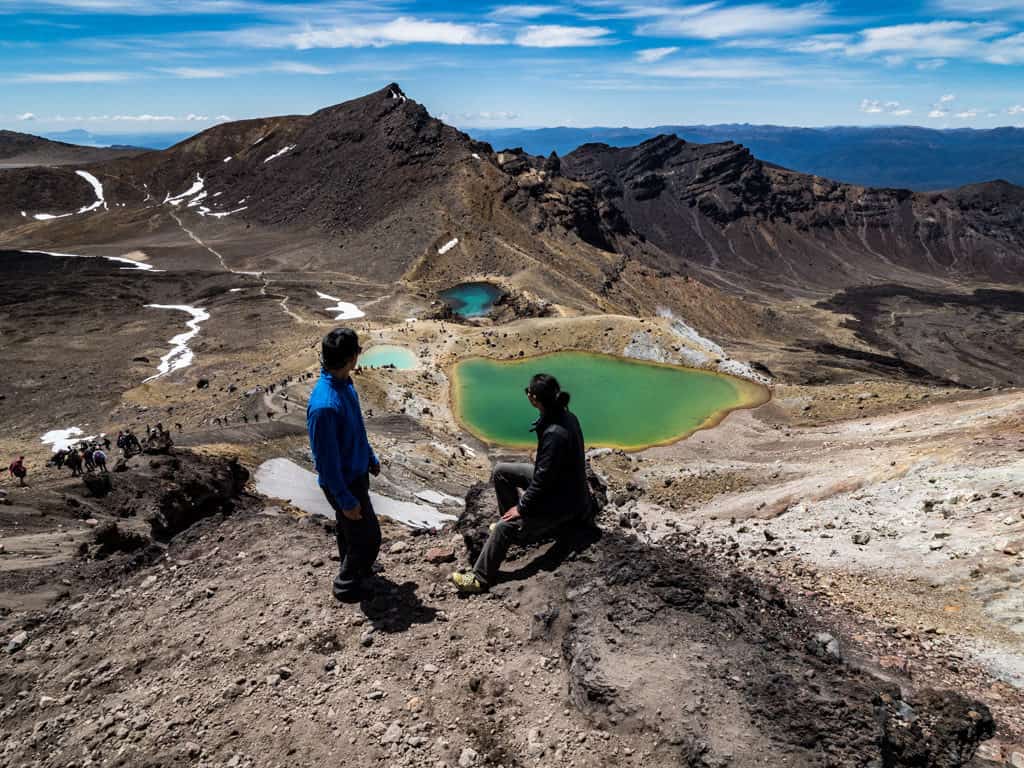
Table of Contents
Jump to the topics that you’re most interested in.
In This Article
The New Zealand Travel Guide
The facts
- Electricity – 230 volts, 50Hz
- Currency – New Zealand Dollars (NZD)
- $1 NZD = $0.67 USD = $0.92 CAD
- ATMs can be found all over and the credit cards are widely accepted
- SIM card – The two main companies in New Zealand are Spark and Vodafone. Both are essentially identical but with Vodafone, you can pick up SIM card packages for tourists at the airport tax-free. You get 3GB of data and 200 calls/texts for NZ$49 which is valid for 2 months.
- Alternative data options – Skyroam is what I used throughout my time in New Zealand. This is a wifi hotspot that you can share with your travel companions and I essentially strategically activated 24 hour day passes of unlimited data($9 USD) when I needed it and relied on free wifi (read my full review).
- Unit of Measure – Meter
- Tipping – No expectation for tips
- Language – The official languages are English and Māori.
Getting there
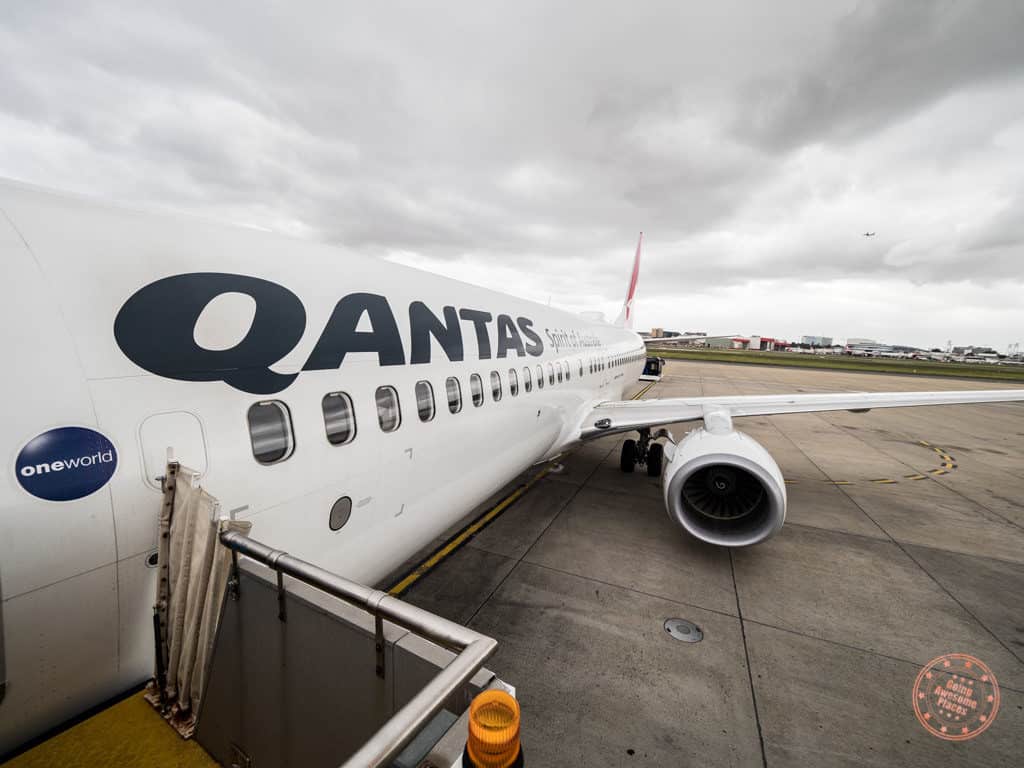
New Zealand’s primary international airport is Auckland Airport (AKL) and I’d say is the main hub of the country where you’ll find most carriers go through. This is the airport that you’ll most likely be connecting through if you want to get to other parts of the country.
Other main airports that you’ll likely want to try to fly into are Wellington (WLG), Christchurch (CHC), Dunedin (DUD), and Queenstown (ZQN). There are of course smaller regional airports but most of those are used when flying inter-country (i.e. Rotorua, Nelson, Hamilton, New Plymouth etc.)
If you’re coming from Australia, you’ll have more options available to fly into your city of choice. Sydney will be your best bet to have the most flexibility in flights.
If you’re coming from North America, almost all direct flights originate from the West Coast so you’re looking at either San Francisco, Los Angeles, or Vancouver.
Qantas and Air New Zealand are the main national carriers to look at but you also have the low cost carriers such as Virgin Australia and Jetstar. I recommend using the Skyscanner to find the best prices on flight tickets and be able to put alerts and trackers if you’re starting to plan early. The Skyscanner app is also super helpful.
Hack: Using Skyscanner, I found out that LATAM Airlines has a route that goes through Auckland enroute to Sydney. The ticket prices for this even last minute were extremely cheap and a great option.
New Zealand biosecurity
For any other country, this is a “same as usual” but as we learned on our trip, New Zealand has taken their biosecurity to another level and I don’t blame them. As an island nation, their ecosystem is quite delicate and needs to be protected or else some of the current issues that they face including toxic pine needles, rampant growth of stoat and possums, and tree killing virus, will only be the tip of the iceberg.
As a result, New Zealand has to have the most scrutinizing screening process that I’ve seen anywhere in the world.
My recommendation to be as honest as possible even if that means checking off any of the biosecurity boxes on the passenger arrival card. When that happens, you’ll be put in a separate line to see a quarantine officer. They’ll ask questions about those items in question and they’ll either clear what you have, clean and treat them (at your own time and cost), or confiscate them.
Once you’re clear, you’ll get back to the regular line where you’ll go through another x-ray check. There’ll also most likely be beagle dogs going back and forth but they’re pretty cute.
Oh and there’s a chance that an officer might approach you near the gate with questions with random questions of things such as where you came from and your intention in the country. They even went even deeper with some questions that surprised us such as “when did you buy your plane tickets?” and “what is your occupation?”
What I’ve done is compile a list of things that you really want to be very careful with when travelling to the country that’s outside of the norm. Remember, as nice as they are, custom officials don’t mess around.
“Any food: cooked, uncooked, fresh, preserved, packaged or dried?” & “Animals or animal products: including meat, dairy products, fish, honey, bee products, eggs, feathers, shells, raw wool, skins, bones or insects?” & “Plants or plant products: fruit, flowers, seeds, bulbs, wood, bark, leaves, nuts, vegetables, parts of plants, fungi, cane, bamboo or straw, including for religious offerings or medicinal use?”
- I don’t know how you can also the card truthfully without having this checked off. Does gum count as food? Certainly granola bars and candies do right? Don’t risk it, just check it off.
- If you take a look at New Zealand’s biosecurity items-to-declare guide, you’ll see a full list of what you’re not able to bring.
- Declare all of your own medication that you have packed.
- A few things we had that were iffy –
- A very Chinese thing to have is dried orange peels but in the end they let it go because it’s glazed with sugar. From their tone, it seemed like if it was prepared another way it could’ve been grounds for confiscation.
- Chinese herbal medicine for upset stomach – They x-rayed the bottles and read the ingredients (luckily there was English on them). They were good with it in the end.
- Recommendation: I’d avoid bringing any foreign language medicinal things because they were surely get flagged. If you want to be safe, just don’t bring any of Chinese herbal medicine.
- They’re very sensitive about honey as you can imagine so avoid that as well.
- Definitely don’t bring any animal products (i.e. crocodile handbags and fur hoods) – Yes, if you have any real fur on your hoods, don’t bring it.
“Items that have been used for outdoor activities, including any footwear, tents, camping, hunting, hiking, golf or sports equipment?” & “Equipment used with animals, plants or water, including for gardening, beekeeping, fishing, water sport or diving activities?”
- The main ones that’ll apply most likely are your shoes and if you brought any camping gear.
- They’ll inspect the sole of your shoes for soil and seeds – I’d recommend that you clean your shoes thoroughly before travelling especially if you’ve gone outside of the city with them
- Your officer will also ask where the equipment has been in the last X number of months.
At the end of the day, it was a bit of a hassle but didn’t add too much additional time from the people that went into the regular line. It’s not worth risking the instant NZ$400 infringement fee. When in doubt, use the “can I bring it into New Zealand” page.
Getting around
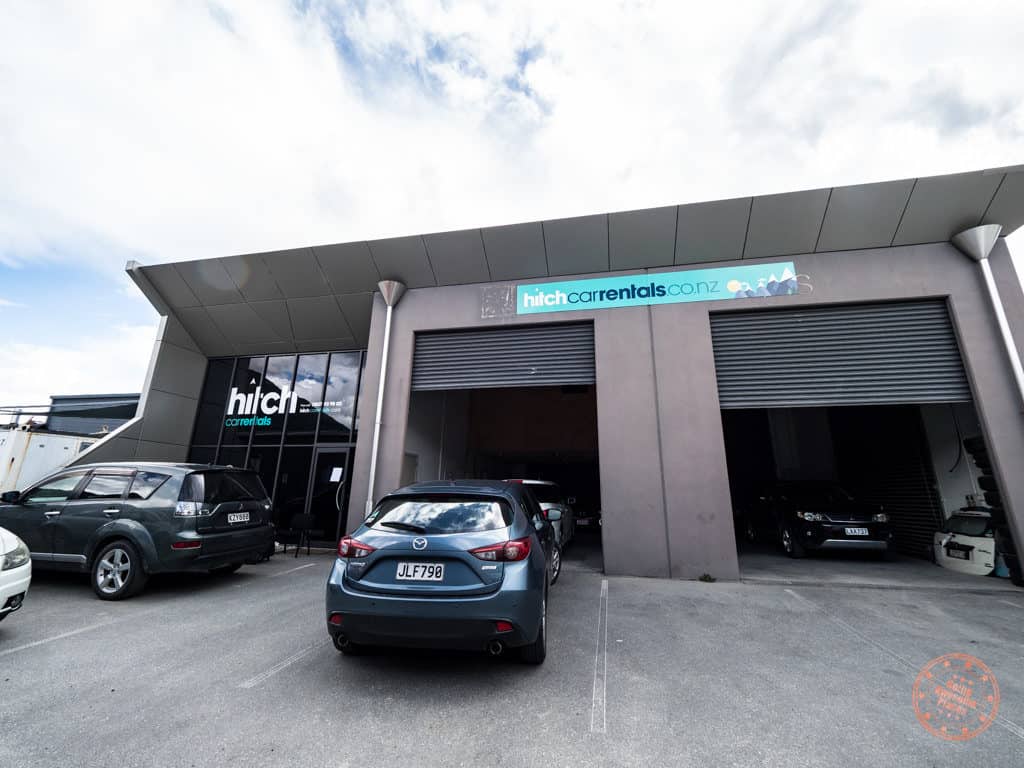
New Zealand’s transportation infrastructure is really well done and so there are a variety of ways to get from place to place. That said, with how rural most of the country is, you’ll likely be relying on some sort of vehicle to see the country. Now whether you do this on your own or with a company, that’s something you’ll have to weigh during the planning stages of your trip.
Car rental
If you’re going to be doing your own road trip, the good news is that there are plenty of car rental companies available to choose from. What you may not know is that instead of looking for the usual big name suspects, you’re going to be better off booking with the local brands in New Zealand if you want the best price.
A few companies to mention are: Gorental, Lucky, Jucy, Hitch, Apex, USave, Ace, Omega.
I personally found that out of all the companies that we price compared, Hitch offered the cheapest rates for an economy hatch. The other surprising thing was that it was automatic transmission too. The only draw-back is that Hitch only operates out of Auckland, Christchurch, and Queenstown Airport locations.
If you’re more comfortable with the more well-known companies, don’t forget to head over to the page that contains all the best car rental coupon codes.
Pro: Ultimate flexibility, plenty of personal space to transport everything that you have.
Con: Energy and effort to do all the driving, parking in the cities, lots of trip planning and preparation, still need to book your own accommodations (if not camping), gas prices are expensive.
Heads up: You cannot take your car rental from North Island to South Island or vice versa through the Interislander Ferry across the Cook Strait. This means you’ll need to book a separate car rental for each island.
Campervan rental
The rise in popularity of campervans as a way to travel has to come from New Zealand because it’s the first place second to Iceland where I’ve seen them in use everywhere. Of course, I also can’t leave out the RV which is also a very popular way to get around the country.
Similar to a car rental, the full freedom of planning your route is the best part of this mode of transportation because you’re not necessarily limited to fixed hotels. New Zealand has a really good system of being able to drop into certain camp grounds and paying on the spot by putting money in a metal box. Alternatively, there are also a ton of trailer parks/holiday parks where you pay for a designated spot to park and you get access to all the facilities. It’s like camping except you’re sleeping in your car instead.
From a budget perspective, campervans are much cheaper when compared to RV’s. Still, you’re looking at roughly NZ$50 a day compared to NZ$15 a day with a car. Also, one way rentals are possible.
Pros: Ultimate flexibility, ability to park and sleep anywhere or use low cost holiday parks, save money
Cons: Additional fuel consumption, more expensive rental rates
Buses
New Zealand has a network of buses called InterCity. Simply put, it’s kind of like what Greyhound is in North America or FlixBus in Europe – long haul busses that can take you to anywhere in the country.
Without going into too much detail about all the different pricing, fare, and schedule options that are available, one of the best options is to look at something called the InterCity FlexiPass which you can think of like a hop-on-hop-off pass that’s based on time. Calculate how many hours you think you’ll need and purchase the appropriate package. With this pass, you don’t necessarily need a fixed itinerary in place. You book online on the fly and is valid for 12 months.
Note that this is also good for use with the Interislander Ferry between Picton and Wellington and day tours with GreatSights and awesomeNZ.
Pros: Price point, good for the more serious backpackers
Cons: Not door to door (how do you get to your eventual destination), more logistic planning required in terms of route booking and schedule, still need to book accommodations, limited by the network of stops
Taxi/Uber
Taxis and ride share apps like Uber only apply in the big cities. While pretty self explanatory, the only thing I’d like to add here is a note about what I learned about Uber.
If you’ve read the top 5 things to do in Queenstown, you’ll know that Uber was only introduced in 2018. As a result, there are some complications in terms of being able to get direct pick ups from the airport there.
The other thing to note is that the standard booking fee in New Zealand with Uber is NZ$0.55.
Pros: Door to door service
Cons: Expensive, may not do pick ups directly from the airport
Public transit
Each of New Zealand’s larger cities will have their own public transit. For instance, in Queenstown there’s the Orbus Queenstown Bus and this is different from say Auckland’s bus/train/ferry system. By that same token, Queenstown uses a GoCard and Auckland has the HOP prepaid card.
One thing we learned when we were in Queenstown is that without one of these transit cards, the prices increase dramatically. Cash fare from the airport is NZ$10 and everywhere else is NZ$5. You can pick up a card for NZ$5 at the Queenstown airport which may be worth it if you plan on taking the bus a lot since the fares drop to NZ$2 for all routes including the airport.
Pros: Can be a cost effective option in the city where it doesn’t make sense to have car
Cons: Increased wait time, not necessarily cheaper especially if you only take it once or twice without a card
Flight
If you need to quickly get from one end of the country to the other, flying may be your best option. When you search on Skyscanner, you’ll be surprised to see how cheap the one-way fares are. They’re almost always less than $NZ100 so it can be a very cost effective way to hop around the country.
Pros: Fast, not necessarily cost prohibitive
Cons: Hassle of flying, skip the best parts of the country which aren’t in the hub cities
A note on filling up petrol in New Zealand
There’s something unique we encountered at petrol/gas stations in New Zealand. While we were told by a local that gas prices should be uniform throughout the entire country, the truth is that they’re not. What was even more bizarre to us was that it seemed like the gas stations that were by the highway were actually cheaper than the ones in the city.
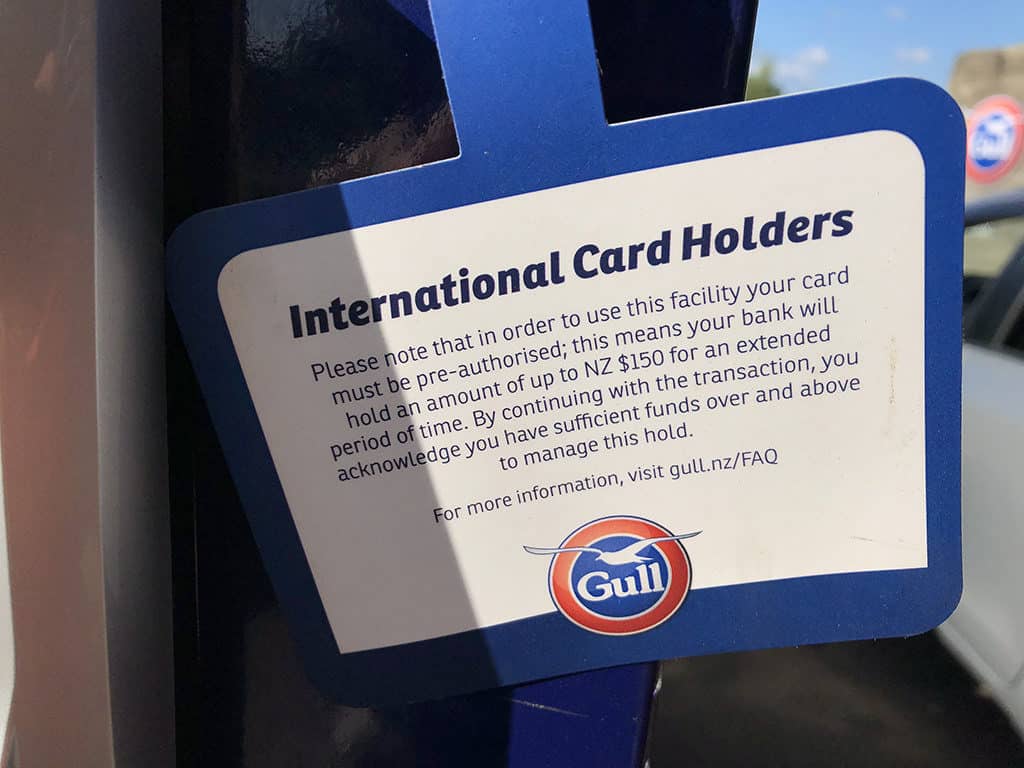
We then learned why:
- Almost none of the gas stations with super low rates by the highway are manned which means you have to use the machine.
- For international card holders, the machines automatically take a NZ$150 hold
- At first the above freaked us out because we thought that meant it would charge a full NZ$150 and then return the difference to what you actually filled back in NZD (double whammy on currency exchange) but when we checked our credit card statements I didn’t see any charges for NZ$150, just the amount that we owed for the gas we filled up.
Conclusion: Behind the scenes it they may do a full NZ$150 hold so make sure you’re not close your limit but there’s no worry in terms of dealing with currency exchange madness. With that said, there’s really no reason why you wouldn’t use these gas stations that have cheaper rates. Just know that you won’t be able to speak to anyone if your credit card is rejected by the machine or anything like that (it’s pre-pay, similar to Iceland).
Where to stay
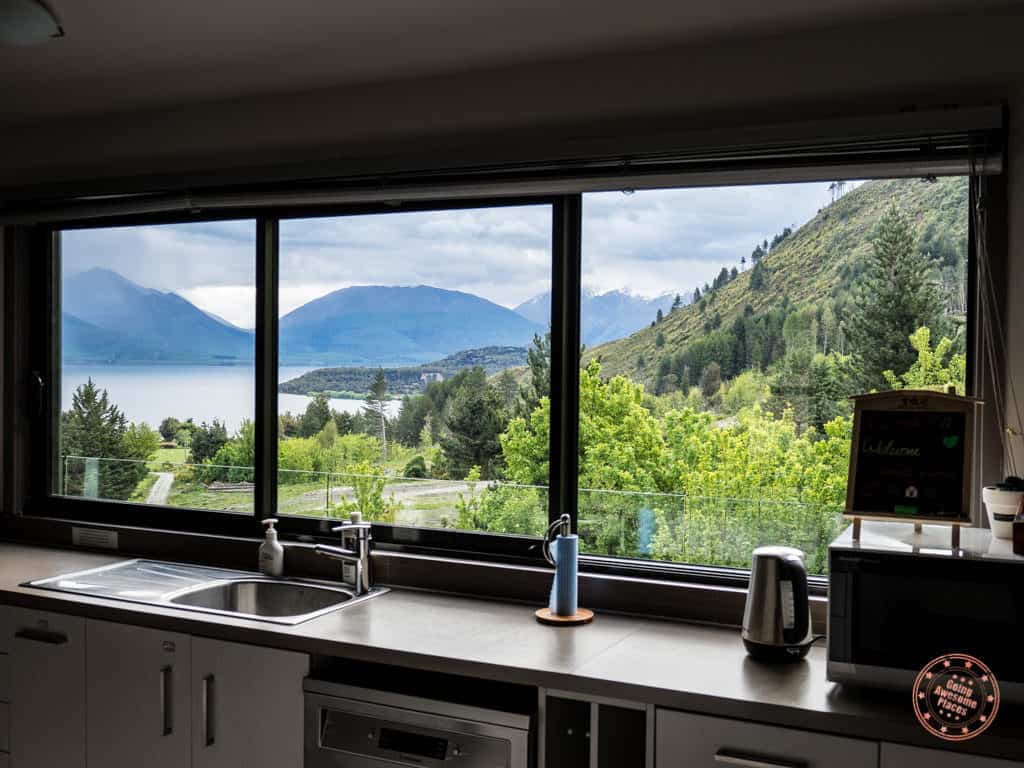
What you need to know about New Zealand is that aside from perhaps Auckland, you’d be hard-pressed to find large chained hotels. You learn pretty quickly that you’ll be spending most of your time passing through small towns and as such, you’ll be relying heavily on bed & breakfast, hostels, holiday parks, and Airbnb.
With the exception of the days in the New Zealand 3 week itinerary that you’ll be travelling with Flying Kiwi, you’ll find a set of recommended accommodations that I personally stayed at or were high on my list during my research.
Hostels

New Zealand started off as a haven for backpacker and so it makes sense that the country has so many hostels. If you’re a backpacker, I don’t need to say anything more. If you’re a traveller looking for more comforts, I’d say that there’s nothing wrong with looking for a private room in a hostel. We were very impressed with most of the hostels we stayed at and for the price point, we were willing to “rough it out” whether that meant a shared bathroom, spartan rooms, or communal kitchens.
Tip: At the YHA in Te Anau, we noticed that reception closed at 7:30PM and if you arrived afterwards to check-in you’d be charged NZ$20 to call someone in as a non-emergency. Something to keep in mind.
Guesthomes
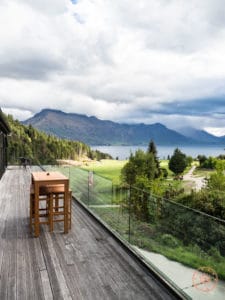
When it comes to B&B’s, and the kind of places that we associate with Airbnb, you’d be surprised with how many New Zealand guest homes that they have in their inventory.
From personal experience, I can often find better properties than I can on Airbnb on Booking.com. The other big bonus is that Airbnb isn’t that friendly when it comes to cancellation whereas with on Booking, properties with free cancellation make it easy to “hold” a room without feeling like you’ve locked yourself in.
Holiday Parks
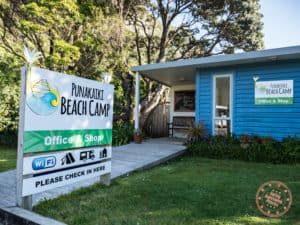
These are unique alternative accommodations that can be found all over the country. They are great for the budget traveller and often offer a variety of options that range from motel-like rooms, cottage units, cabins, and RV sites.
These were the typical type of places that we would stay at with Flying Kiwi where our bus would be able to drive in and we’d set up camp on their grounds. It’s the holiday parks that provide all the facilities that we need including kitchen, lounge, power, laundry, and bathrooms. These are typically all communal.
You’ll find that holiday parks are in prime locations (i.e. next to the beach or steps away from the Abel Tasman National Park)
Camping
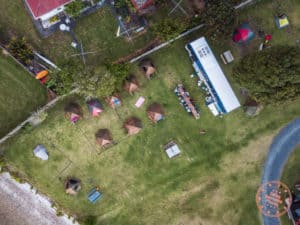
While you can go camping at holiday park sites, I’m referring to more of the national parks that offer open campsites. The Department of Conservation (DOC) manages this and there are both campsites that require reservations and others that don’t.
For campgrounds, these are the standard campsites where you’re able to drive into and pitch a tent in one of several designated spots. There are then the huts, lodges, and campsites for when you head into the backcountry for let’s say something like the Milford Track.
Campsites that don’t require reservation will usually have a box for payment and is on a first-come-first-serve basis.
These are great for those that are looking to do a lot trekking, have a campervan/RV, or plan to camp all the way throughout New Zealand.
Curious where our favourite place we stayed was? More on that below but I highly recommend Arthur Street B&B in Whitianga of the Coromandel Peninsula
New Zealand geography
New Zealand is such an amazing country to explore because of how geologically diverse it is from top to bottom and how compact it is when you compare it to my home country of Canada. That’s why it is the perfect place to drive through and be able to do it in as little as 3 weeks.
While it’s all easy to see everything you want to, having an understanding of the two islands, and how the landscape differs from one to the other can help you in your trip planning.
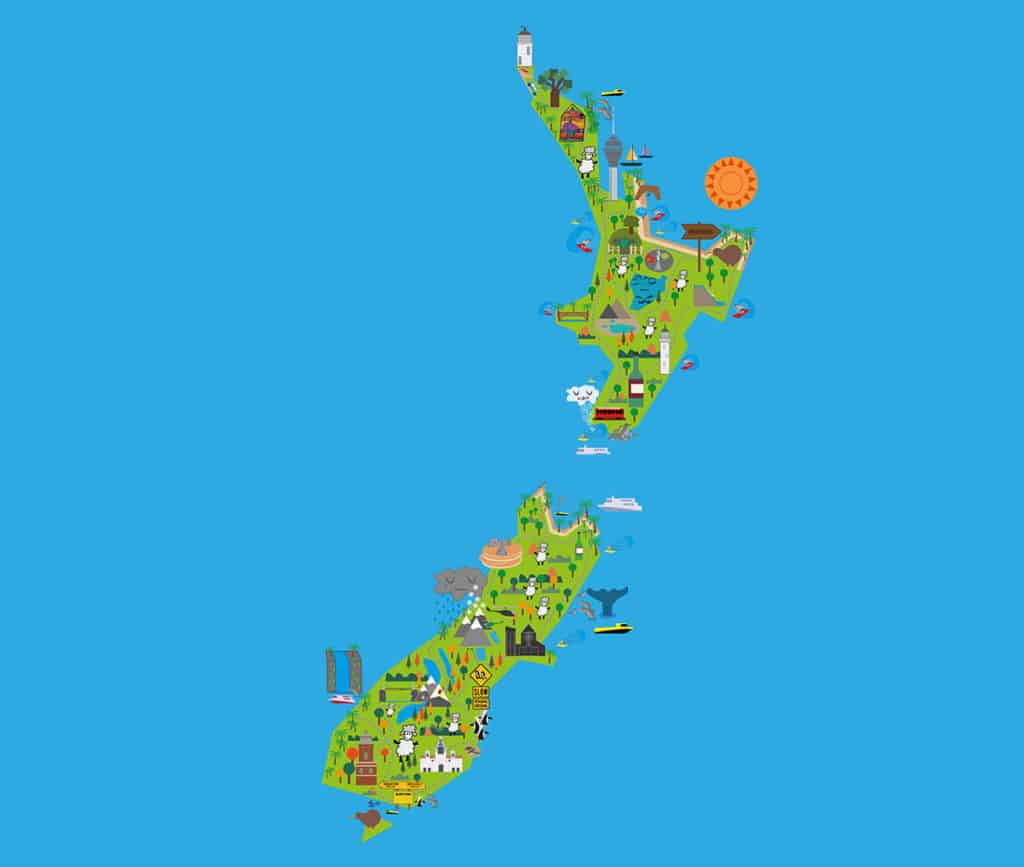
Here are what I observed as the main differences between the two islands.
North Island
- Often the less popular of the two island but as such, offers a lot of hidden gems that aren’t as well known
- Bay of Islands is a tropical paradise filled with beaches, laid back towns, and dotted with small islands which makes it perfect for sailing trips
- A majority of the land is zoned for farming and so you’ll find significantly more grazing plains and rolling hills
- You’ll notice more cows than sheep here
- A hub of geothermal activity that starts in Rotorua but can be found in places like Taupo and Hot Water Beach of Coromandel Peninsula
- Less mountainous of the two islands but you can’t forget about the dominating peaks of Mount Taranaki and twin peaks that are part of the Tongariro Crossing
- Auckland and Wellington are the two big cities of the island and are found on near opposite ends
- Noticeable warmer weather when comparing to the South Island
South Island
- Significantly more dramatic if you factor in how you’re looking at mountain ranges here instead of single mountain peaks, and you have the fjords. This is what makes the size and scope that much larger in the south
- There seemed to be more sheep in the south but I wonder if that is just because of the areas we drove through
- Adventure capital of Queenstown is a pretty big deal all season round
- The weather tends to more variable in the south and noticeably cooler
- Filled with rugged landscape
- Has the advantage of having a few of the most iconic national parks in New Zealand – Fjordland National Park (Milford Sound), and Abel Tasman National Park.
- The two major cities in the south are Queenstown and Christchurch
What joins the two islands is a ferry service called Interislander Ferry that runs between Picton in the south and Wellington in the north and through the Cook Strait.
What to pack for New Zealand
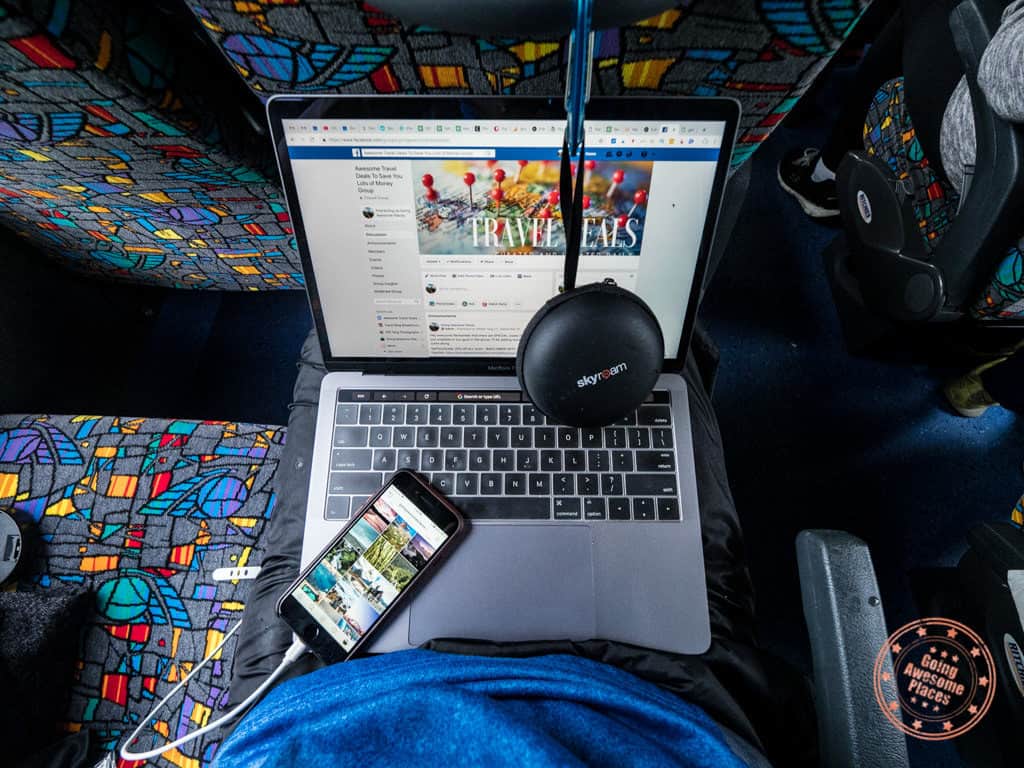
Looking for a packing list? I got you covered. Prior to leaving for our trip to New Zealand I meticulously catalogued everything that I brought and also analyzed post-trip what was a bad idea and what I wish I had brought.
Check out the full New Zealand packing list for the full details.
As always, I leave you with these top 3 recommendations:
- Pack layers and versatile clothing
- Pack light
- Bring lots of batteries and memory because New Zealand is so damn photogenic
Best time to go to New Zealand
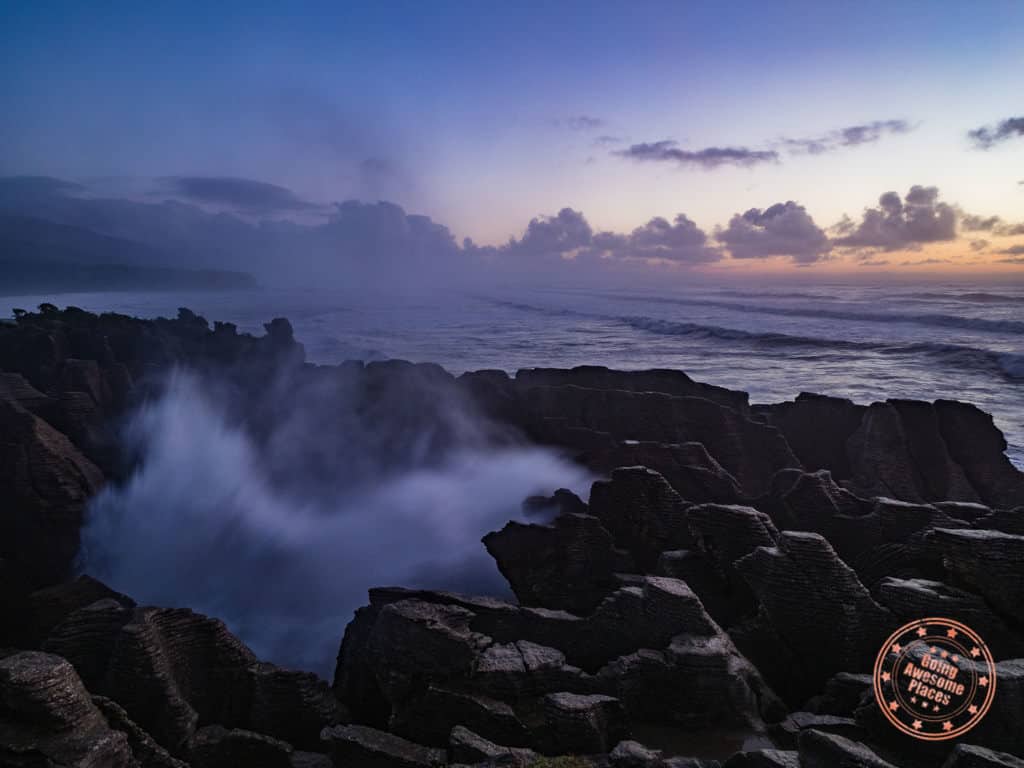
First you have to wrap your head around the fact that New Zealand is in the Southern Hemisphere and as such everything is opposite to what you’re used to if you’re coming from the Northern Hemisphere. Not only are the seasons reversed, you also have to keep in mind that further north you go, the warmer it is. Trust me, it takes awhile to get used to that fact.
Summer (December – February)
When a big part of the world is freezing, summer is on full blast during these 3 months and is of course a very popular time to go to New Zealand because the weather is very warm and you won’t see too much rain. The only thing to consider is that this is also when Kiwis take time off so you will inevitably be in the thick of high-season.
Fall (March – May)
The Fall season is a beautiful time to be in New Zealand as the temperatures start to cool off and so do the prices and crowds. Head to the south island and in Queenstown, Central Otago, and Christchurch to see the spectacular autumn colours. The best part about this season that you’ll likely still be wearing summer clothes if you find yourself in Auckland or further up north in the Bay of Islands.
When you combine lower airfare, cheaper accommodations, good weather, and smaller crowds, this is one of the best times to go. For those that hike, many of the main tracks are all open and easier to book as long as the weather holds up.
Winter (June – August)
While it may not get as cold as Canada does in the winter, Queenstown and the lower portion of the South Island become a bit of a winter wonderland. That is what makes it the perfect time to hit the slopes. There’s definitely novelty to be skiing or snowboarding in July for those that are from the Northern Hemisphere.
If you’re not interested in winter sports, this is probably the least favourable season to come to New Zealand just because of the limitations in terms of what you’ll be able to see, seasonal closures, and the cold. New Zealand homes aren’t well-insulated so staying layered and bundled is important.
Spring (September – November)
Spring blooms, warming weather, baby lambs are balanced with fickle weather but all-in-all, this is a great shoulder season to come to New Zealand. You’ll be able to enjoy the full experience without the crowds and peak prices.
It’s quite the sight to see the countryside flush with green grace and flower in abundance. Just make sure to be prepared with waterproof gear because you never know when it might start dumping on you as it did for us in November.
How much does a trip to New Zealand cost?
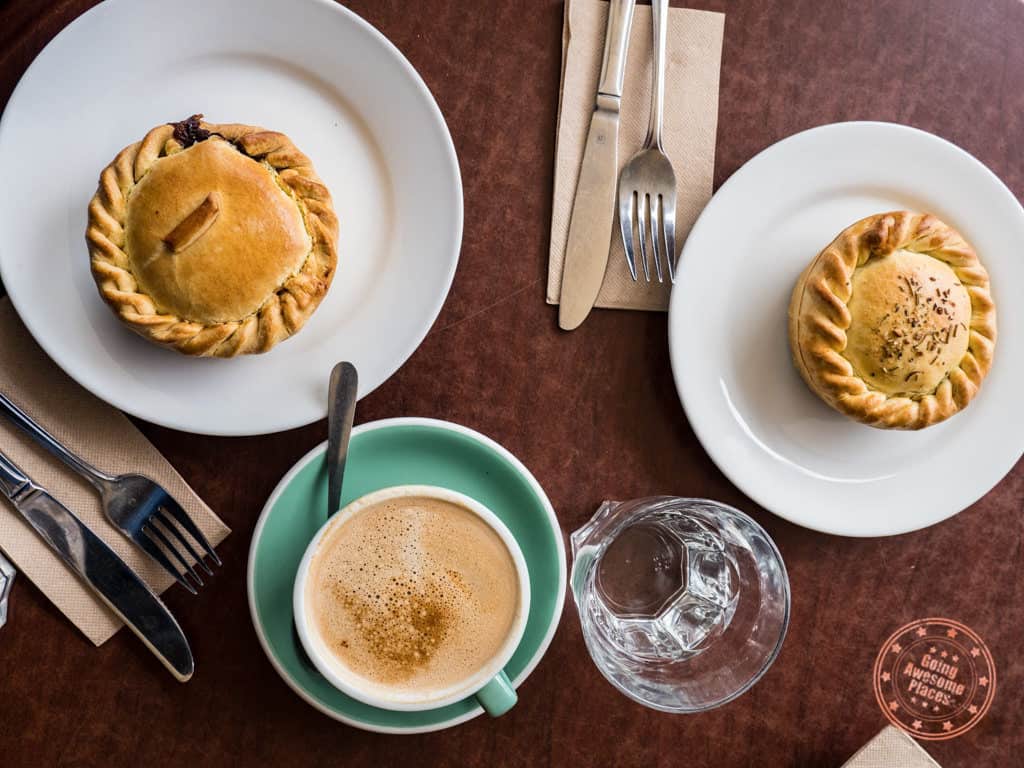
I’d be the first to tell say that out of the many places you can travel to around the world, New Zealand isn’t going to be the cheapest option. With a high standard of living, healthy influx of tourism, remote location, and vast rural landscape, prices for food, lodging, and transportation are just as high as in North America and Europe, if not more. The good news is that the country’s travel industry was built on a backpacker foundation and so there are a lot of options for the budget-minded.
On the flip side of the coin, while there are luxury options available, they are few and far between once you head out of the major hubs. Look hard enough at, you can certainly find luxury properties in New Zealand which are very unique and appropriate to the landscape. I’d say that those looking for a “finer things” experience will be able to find it but for most, New Zealand is very much of place with plenty of low to mid-tier spend opportunities, with some leaning more towards “roughing it”.
The most expensive part of your trip will most likely be the flight itself because it’s just so far away from almost every country unless you’re their neighbour, Australia. Flights can easily run you over US$1,000 and will also involve very tiring few days to get to New Zealand.
On average, actual daily spend per person based on our own trip was at least US$100 a day which includes accommodation, transportation, food, and activities. What this doesn’t include are the flights and our Flying Kiwi tour which cost just over NZ$2,500 per person.
What makes every day expensive
- Gas rates are very high
- Food at regular casual restaurants are expensive – expect to spend at least NZ$20 per person for dinner
- Excursions and activities add up and New Zealand’s the kind of place where you’ll want to do it all
- Accommodations
How to cut costs
- Find a cheap car rental
- New Zealand isn’t known for it’s cuisine (unless you opt for luxury) and so you’re better off cooking your own food
- Accommodations can be cheap if you camp or use hostels you find on Hostelworld
- Plan ahead and if you’re on a tight budget, pick and choose activities that are “must-do” and look for alternative free activities for the others
- Tours like Flying Kiwi not only make your planning easier but the nature of the type of trip it is means you’ll be staying on a path of reasonable spend
What you need to know about cellular data

So far I’ve already talked about options for getting access to data. There’s either the traditional SIM cards you can get once you land at the airport with Vodafone or Spark, there’s the wifi hotspot option with Skyroam, or you can rely on free/paid wifi.
My recommendation is to stick with something like Skyroam especially if you’re going to be visiting additional countries to New Zealand. I love that I can just hop off the plane, activate my day pass, and be ready to hit the ground running. On top of that, I can share with my wife. They’ve also made tweaks to their unlimited data policy where there’s no throttling anymore so as long as you’re not hogging up the bandwidth, you can use as much data as you want.
Of course, all of these cellular data options rely on having solid signal strength. What is not so obvious from reading other travel guides out there is that there are still significant pockets of areas especially in the South Island that are blackout from 3G and 4G. If you take a look at coverage maps for Vodafone and Spark and filter on 4G, you’ll get a good sense of how sparse data availability is especially on the western coast.
Why is this important? This is especially important if you’re relying on your phone’s data to navigate. My recommendation is to leverage Google Map’s offline capability, and do your homework in advance by drop pins on your map app and start your navigation where you have data.
In addition, take screenshots of your digital tickets. I also find using Google Sheets helpful for trip planning since it has offline capability.
To offset this, I was pleasantly surprised with how easy it was to find free wifi in each of the towns we dropped by.
Popular tours to consider pre-booking
Now if I were to list all of the best activities in New Zealand, this would be a never-ending post so why don’t I focus on the activities that I highly recommend that you do your research ahead of time and book months in advance. These are incredible experiences that you don’t want to miss.
Hobbiton Film Set
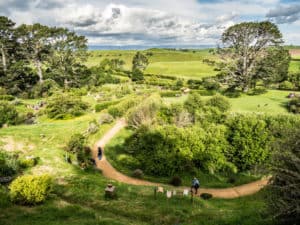
If you’re a fan of Lord of the Rings like I am, you’re going to go nuts for the actual set for Hobbiton. From seeing Bag End, opening the round door of 40 Bagshot Row, being on the grounds of the big party, having a pint at the Green Dragon, and passing by Sam’s hobbit hole, this is definitely a highlight to any trip to New Zealand.
The reason why I recommend booking well in advance is because during the high season, the time slots fill up fast despite tours running every 5 minutes. Even more important is if you want to do the tour of Hobbiton at dusk with dinner feast. You can book a variety of day tours to Hobbiton from Auckland on Viator or GetYourGuide which can include stops to even the Waitomo glowworm caves.
WANT TO KNOW MORE ABOUT HOBBITON?
Make sure to catch our full guide on the Hobbiton experience in the North Island of New Zealand
Milford Sound
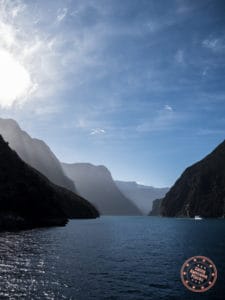
The grand scale of Milford Sound cannot be described with words. You just need to go. The best way to see the fjords including the waterfalls, seals, black coral, and Mitre Peak is by cruise boat or by kayak, or even better do both.
In order to get to Milford Sound, you can drive there yourself. It’s much more reasonable to do the drive from Te Anau in the morning but it is certainly do-able from Queenstown. Alternatively, there are day tours from Queenstown that are super convenient.
It’s recommended to book early because the cruises do fill up quickly especially with the number of large tour buses that make it up there every day. Lock it in early because it would be a shame to miss out on one of the biggest highlights of New Zealand.
Diving in the Bay of Islands
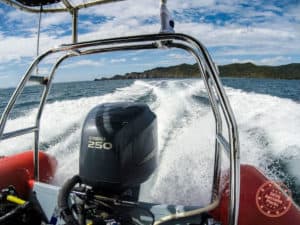
You probably didn’t even know you could dive in New Zealand. It’s a hidden secret but if you’ve got your diving certification or looking to get one, take advantage of the tropical paradise that is the Bay of Islands. The premiere dive shop to look for is in Paihia. Book a dive trip to get up and close to Greenpeace’s Rainbow Warrior or the HMNZS Canterbury.
If you’re interested in going scuba diving, send out a request to the Paihia Dive team to see if the specific trip you want is running on a specific day as they aren’t necessarily daily. In speaking with the owners, if you put a specific request in, they could tweak the schedule. Spots also fill up quickly.
Glow Worms and Black Water Rafting

The Legendary Black Water Rafting experience is well…truly legendary. I wasn’t sure what to expect to to tell you the truth but once we were in the cave with headlamps on, and the rushing water swiftly carrying us, I began to understand how special this was. The real show was when we got to the section of the cave where the entire ceiling was lit with blue lights like stars.
The Black Labyrinth tour is the one we went on and while it isn’t the most extreme of their offerings, it was a perfect balance of adventure, physical activity, and glow worms. There’s also the 4 hour Black Abyss which is a bit more strenuous and offers the opportunity to climb waterfalls and zipline.
As you can imagine, these tours sell out quite quickly especially during peak season.
Skydiving
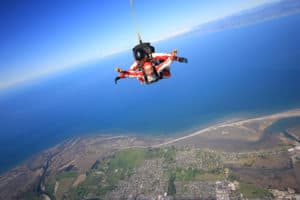
If high flying adventures is what you’re looking for, you pretty much have to jump out of a plane. Almost every place you go in New Zealand seems to have their own skydiving outfit. While the experience is more or less the same across the board, I have to argue that doing it in the north of the South Island is one of the best places to do it.
Skydive Abel Tasman was a ridiculously amazing experience and I would recommend it to anyone. You have your choice between 9,000, 13,000, and 16,500 feet. The views that you have from any of those heights are just incredible with the national park in view, the coastline, and on some clear days, being able to see the North Island as well.
It’s a good idea to book early just to make sure you are guaranteed a spot when you pass by the Abel Tasman area.
Horseback Riding in Glenorchy
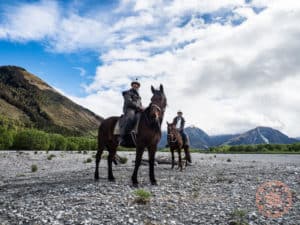
Want to do something different in New Zealand? Go on a horseback riding trip through an area that was used as the set of many blockbuster movies including Lord of the Rings, X-Men, Mission Impossible, and Prince Caspian from the Narnia Chronicles.
We previously did horseback riding with Dart River Adventures but it looks like they’re not operating these trips anymore so I’d recommend checking out High Country Horses or Lighthorse Adventures in Glenorchy.
During high seasons these will fill up really quickly so reserve ahead of time.
Flying Kiwi
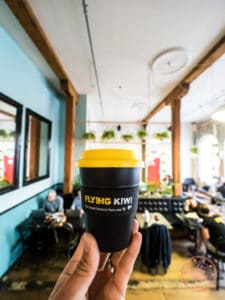
Of course how can I go through these activities and not mention our 14 day adventure through New Zealand with Flying Kiwi. Normally we’re not bus tour kind of travellers but in this case where we wanted a guided experience that had a focus on the outdoors, adventure, and camping, we couldn’t have asked for a better company whether it came to the quality of the itinerary, tour guides, food, and selection of campsites and holiday parks.
Read the full review of our Flying Kiwi Reverse Traverse to learn more about what the trip was really like.
5 main take aways

- Stay on top of the cheapest flights to New Zealand by using something like Skyscanner to set up alerts
- Picking up your own supplies and cooking at a hostel or at camp is the biggest way to save money in New Zealand
- Don’t get disappointed when a tour fills up – book ahead of time. Check out possible activities in advance on Viator or GetYourGuide
- Shoulder seasons (Fall or Spring) are your best times to travel to New Zealand – avoid the crowds and take advantage of lower prices
- There are a ton of options in terms of getting around the country. There’s no right answer so figure out what works for you and don’t be afraid to mix and match different ones like we did (car rental and Flying Kiwi).
What you should read next
Have specific questions about your upcoming trip to New Zealand? Drop a comment below!
